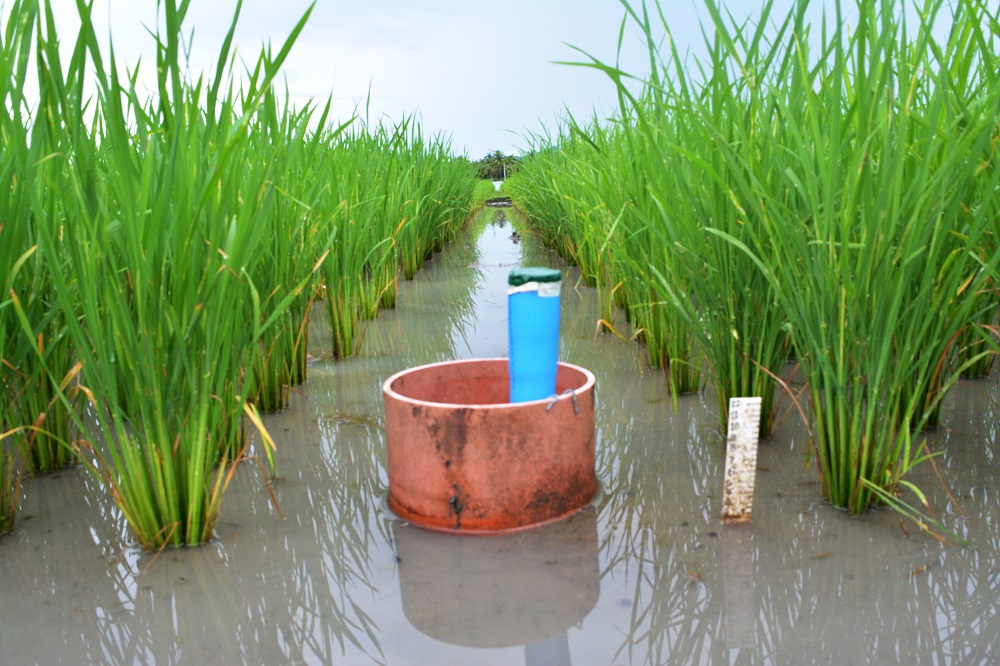
Rice is one of the most important staple crops in the world, but it also consumes a lot of water. According to the Food and Agriculture Organization (FAO), rice production accounts for about 34% of the total irrigation water use globally. However, water scarcity is a growing challenge for many rice-growing regions, especially in Asia, where more than 90% of the world’s rice is produced. Therefore, there is a need for water-saving technologies that can reduce the irrigation water demand for rice without compromising its yield and quality.
One such technology is alternate wetting and drying (AWD), which is a water management technique that involves applying irrigation water to flood the field a certain number of days after the disappearance of ponded water. Hence, the field is alternately flooded and non-flooded. The number of days of non-flooded soil in AWD between irrigations can vary from 1 day to more than 10 days depending on the soil type, crop stage, and weather conditions. A simple tool, such as a perforated PVC pipe or a bamboo tube, can be used to monitor the water level below the soil surface and indicate when to re-irrigate.
AWD has several benefits for rice farmers and the environment. First, it can save up to 30% of irrigation water compared to conventional continuous flooding, which can help alleviate water stress and increase water productivity. Second, it can reduce greenhouse gas emissions from rice fields, especially methane, which is a potent contributor to global warming. Methane is produced by anaerobic bacteria in flooded soils, but AWD creates aerobic conditions that inhibit methane production and emission. Third, it can improve soil health and nutrient availability by enhancing soil aeration and microbial activity. Fourth, it can reduce weed growth and pest infestation by creating unfavorable conditions for them during the drying periods. Fifth, it can maintain or even increase rice yield and quality by avoiding water stress and enhancing root growth and nutrient uptake.
AWD is a smart and sustainable water-saving technology for rice cultivation that can help farmers adapt to climate change and water scarcity while ensuring food security and environmental protection. However, AWD requires careful management and monitoring to avoid crop stress and yield loss. Therefore, farmers need to follow some best practices, such as using suitable varieties, applying balanced fertilizers, maintaining optimal plant density, controlling weeds and pests, and adjusting irrigation schedules according to crop stage and weather conditions. Moreover, farmers need to be aware of the benefits and challenges of AWD and receive adequate training and support from extension services and research institutions.
AWD is not a new concept, but it has gained more attention and adoption in recent years due to its proven advantages and potential impacts. Several countries in South and Southeast Asia, such as Bangladesh, China, India, Indonesia, Philippines, Thailand, and Vietnam, have been promoting AWD as a recommended practice in water-scarce irrigated rice areas. The International Rice Research Institute (IRRI) has been leading the research and dissemination of AWD through national agricultural research and extension systems. AWD is also supported by various international organizations and initiatives, such as FAO, CGIAR Research Program on Climate Change Agriculture and Food Security (CCAFS), Global Water Partnership (GWP), Sustainable Rice Platform (SRP), among others.
AWD is a simple yet effective way to save water and reduce emissions in rice farming while maintaining or increasing productivity and profitability. It is a win-win solution for farmers, consumers, and the planet.

Leave A Comment